Crypto Adoption Calculator: Understanding Argentina's Digital Money Shift
Peso Stability:
• Official exchange rate: 948-1,475 ARS/USD
• Monthly USD cap: $200/person
• Inflation (2023): 200%+
• Blue dollar premium: 70-80%
Crypto Market Share:
• Stablecoins: 89% of crypto volume
• Bitcoin: 12% of total crypto holdings
• Top stablecoins: USDT, USDC, DAI
Estimated Financial Impact
Explanation: With 200% inflation, using stablecoins allows you to bypass the $200 monthly USD limit, avoid the 70-80% blue dollar premium, and enjoy near-instant transactions with minimal fees.
Key Takeaways
- The Argentine peso has logged inflation above 200% in 2023, pushing citizens toward digital money.
- Stablecoins absorb 89% of crypto volume on local exchanges, making Argentina the second‑largest crypto market in Latin America.
- Bitcoin is gaining ground as a long‑term store of value, while USDT, USDC and DAI dominate day‑to‑day transactions.
- Capital controls limit official USD purchases to $200/month, creating a strong incentive for unlimited stablecoin access.
- Regulatory sandboxing and VASP licensing are shaping a more predictable environment, but political volatility will keep demand high.
When a currency loses its ability to hold value, people start looking for anything that can preserve their purchasing power. In Argentina, the Argentine peso is a managed fiat currency that has suffered hyperinflation, devaluation and strict capital controls since 2020 has become that catalyst. The result? A surge in cryptocurrency adoption in Argentina that is reshaping how households, businesses and even the government think about money.
Why the Peso is Unstable
Since 2022 the peso has been forced into a managed band where the official exchange rate swings between 948 and 1,475 pesos per US dollar. Inflation topped 200% in 2023, and the central bank has burned through a $1.1billion reserve pool trying to prop up the currency. Capital controls cap legal USD purchases at $200 per person each month, forcing anyone who needs more dollars onto the black‑market “blue dollar” or, increasingly, onto digital alternatives.
These economic pressures create three clear problems for everyday Argentines:
- Loss of real‑time purchasing power - your paycheck buys far fewer groceries each week.
- Inability to hedge against inflation using traditional savings accounts.
- High transaction costs and delays when converting pesos to foreign currency for imports or travel.
Enter crypto, and the pain points begin to disappear.
The Crypto Hedge: What People Are Buying
According to Chainalysis, Argentina moved $93.9billion in crypto transactions in the last year - a figure that outranks Mexico, Venezuela and Colombia combined despite Argentina’s population being roughly one‑fifth of Brazil’s. The bulk of that volume (89%) lands on stablecoins, making the country the second‑largest stablecoin market in Latin America.
On the local exchange Lemon is a leading Argentine crypto platform that offers fiat‑on‑ramp services, spot trading and DeFi integration, stablecoin purchases spiked on September142024, coinciding with a political announcement that heightened uncertainty. When the peso slipped, users instantly swapped pesos for USDT, USDC or DAI - digital dollars that can be moved across borders in seconds.
Stablecoins Lead the Pack
The three most popular stablecoins each bring a different appeal:
- USDT is a US dollar‑pegged token issued by Tether, known for high liquidity and wide exchange support - preferred for quick trades and everyday payments.
- USDC is a regulated stablecoin from Circle and Coinbase, audited monthly for reserve transparency - chosen by users who value corporate governance.
- DAI is a decentralized stablecoin backed by crypto collateral on the Ethereum blockchain, offering full transparency of its reserve composition - favored by tech‑savvy Argentines who want an open‑source alternative.
Because stablecoins are priced one‑to‑one with the US dollar, they let Argentines bypass the $200 monthly cap, avoid the black‑market premium, and keep funds in a portable, programmable form.
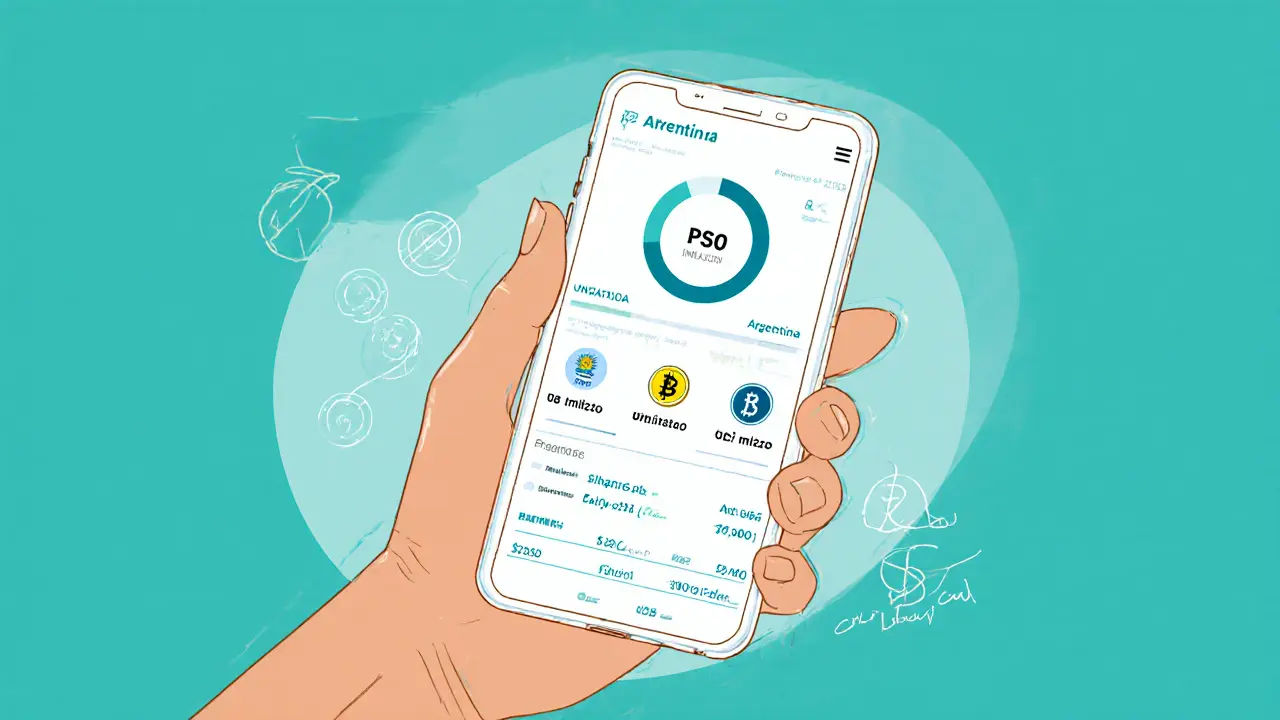
Bitcoin: From Speculation to Preservation
While stablecoins dominate short‑term hedging, Bitcoin is carving out a niche as a long‑term store of wealth. Lemon reports that the number of users holding Bitcoin now exceeds those holding crypto‑dollar assets on the platform. The narrative has shifted from “buy the dip” to “protect my savings for the next generation.”
Bitcoin’s appeal lies in two key attributes:
- Finite supply - only 21million coins will ever exist, providing a hard cap that fiat can’t match.
- Global acceptance - merchants worldwide accept Bitcoin, making it a viable tool for cross‑border trade.
Argentinian entrepreneurs are already using Bitcoin to invoice overseas clients, converting pesos to Bitcoin first, then settling in USD‑denominated invoices without ever touching a bank.
Real‑World Use Cases Beyond Savings
Crypto isn’t just a “digital piggy bank.” In the last 12 months, three practical scenarios have exploded:
- Remittances: Families receive money from relatives in the U.S. via stablecoins, cutting transfer fees from 8% to under 1% and delivering funds instantly.
- Business payments: Small retailers accept USDT at point‑of‑sale, converting to local pesos at the prevailing rate the moment the transaction is settled.
- International trade: Exporters invoice in DAI, ensuring they receive a stable dollar value even if the peso collapses before the goods are shipped.
These use cases are reinforced by the cross‑border PIX‑like system that Brazilian fintechs such as MercadoPago have rolled out for Argentine merchants, allowing Brazilian tourists to pay directly in stablecoins without costly FX conversions.
Regulatory Landscape: Between Sandbox and Skepticism
The Argentine government has begun to formalize the crypto space. In 2023 a regulatory sandbox was introduced, and the Central Bank of Argentina (CBA) issued its first licenses for virtual asset service providers (VASPs) last year. These steps provide a degree of legal certainty, encouraging institutional entry.
However, many Argentines remain wary of government involvement. Ignacio Gimenez, business manager at Lemon, notes that “electoral uncertainty is driving Argentines to seek refuge in currencies stronger than the peso, such as the crypto dollar.” The sentiment reflects a broader distrust of traditional monetary policy, especially after the United States floated the idea of swap lines and debt purchases to prop up the peso - measures the crypto community sees as short‑lived fixes.
Analysts at the Milken Institute is a global think tank that publishes research on financial markets and economic development argue that crypto will remain a parallel financial system in Argentina as long as inflation stays above 100% annually. The organization’s forecasts see stablecoin transaction volume growing at a compound annual growth rate (CAGR) of 28% through 2028.
Comparison of Crypto Options vs Traditional Alternatives
| Feature | Stablecoins (USDT/USDC/DAI) | Official USD Purchase | Blue Dollar Market |
|---|---|---|---|
| Monthly Limit | Unlimited | $200 per person | Unlimited but at 70‑80% premium |
| Transaction Speed | Seconds‑to‑minutes | 1‑3business days | Immediate (cash) |
| Fees (average) | 0.5‑1.5% | 0‑0.5% (bank fees) | 0% (cash) but hidden premium |
| Regulatory Risk | Medium (VASP licensing) | Low (official) | High (illegal market) |
| Transparency | High (blockchain ledger) | Low (opaque bank rates) | Low (informal pricing) |
The table makes it clear why stablecoins have become the de‑facto dollar for most Argentines: unlimited access, fast settlement and a transparent price point that tracks the global USD.
Future Outlook: Will Crypto Remain a Stop‑Gap or Grow Into the Core?
Several forces will shape the next five years:
- Continued Peso Volatility: If inflation stays above 100%, demand for stable, non‑inflationary assets will keep rising.
- Regulatory Maturity: More VASP licenses and clearer tax guidelines could attract institutional liquidity, lowering spreads.
- Tech Adoption: Growing Spanish‑language DeFi tutorials and local hackathons (e.g., Ethereum World Fair) will lower the technical barrier for advanced use.
- International Support: Potential U.S. swap lines could stabilize the peso temporarily, but history shows that such fixes are short‑lived without structural reforms.
Analysts at Chainalysis project that by 2027 Argentina could see stablecoin transaction volumes exceed $150billion annually, eclipsing even Brazil’s fiat‑crypto mix. Bitcoin’s share of total crypto holdings is expected to rise from 12% today to roughly 20% as more users shift toward “digital gold.”
In short, crypto in Argentina has moved from a fringe curiosity to a core component of everyday finance. Whether the next chapter sees tighter regulation or broader adoption, the lesson is clear: when a national currency can’t protect its people’s wealth, digital alternatives will step in.

Frequently Asked Questions
Why are stablecoins more popular than Bitcoin in Argentina?
Stablecoins are pegged 1:1 to the US dollar, so they provide instant price stability - a key need in an environment where the peso loses value daily. Bitcoin’s price swings are still too volatile for everyday transactions, making it better suited for long‑term savings rather than daily purchases.
Can I use stablecoins to pay for groceries or rent?
Yes. Many retailers in Buenos Aires accept USDT or USDC via QR codes and mobile wallets. The transaction settles in seconds, and the merchant can instantly convert the stablecoin to pesos or keep it as a digital asset.
What are the tax implications of holding crypto in Argentina?
The AFIP (Argentina’s tax authority) treats crypto as an intangible asset. Capital gains above the annual exemption threshold are taxed at 15%, and reporting is required on the annual income statement. Recent VASP licensing aims to simplify reporting for exchanges.
How safe are the major stablecoins?
USDT and USDC are backed by large reserve accounts audited regularly, while DAI is over‑collateralized with crypto assets that are transparent on the Ethereum blockchain. Risks remain, such as regulatory changes or smart‑contract bugs, so diversifying across multiple stablecoins and keeping funds in reputable wallets is advisable.
Will the Argentine government eventually ban crypto?
A total ban is unlikely because crypto has become integral to remittances and commerce. Instead, the trend is toward regulation, licensing, and sandbox programs that allow the sector to operate under oversight while preserving its economic benefits.


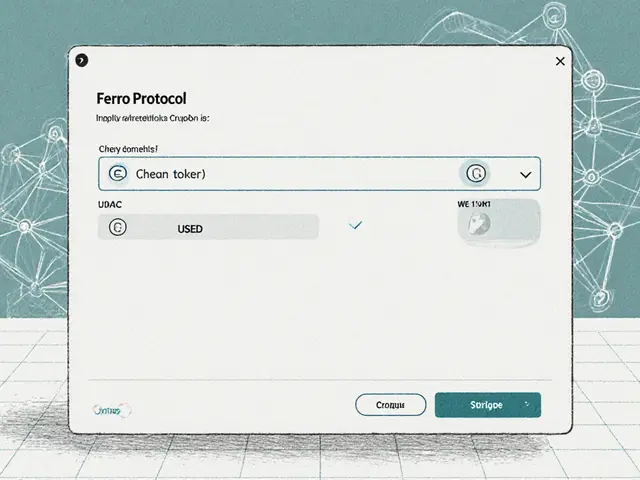
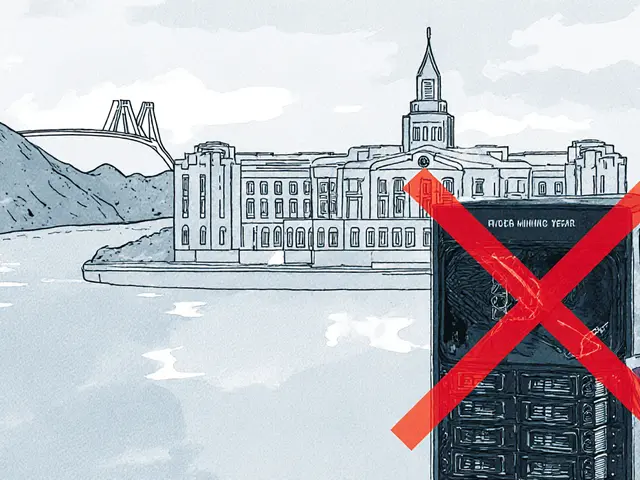
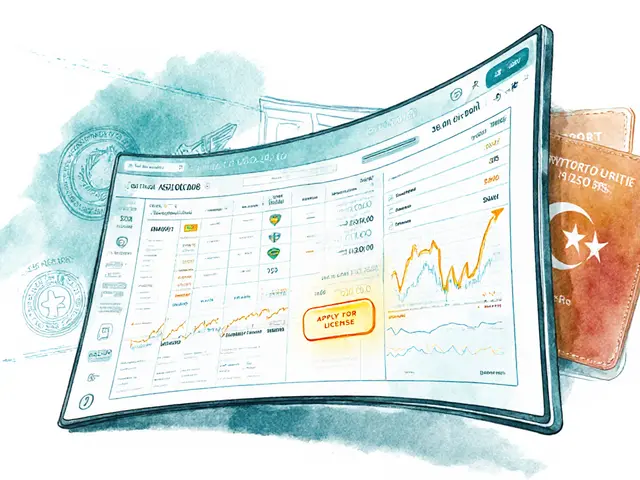
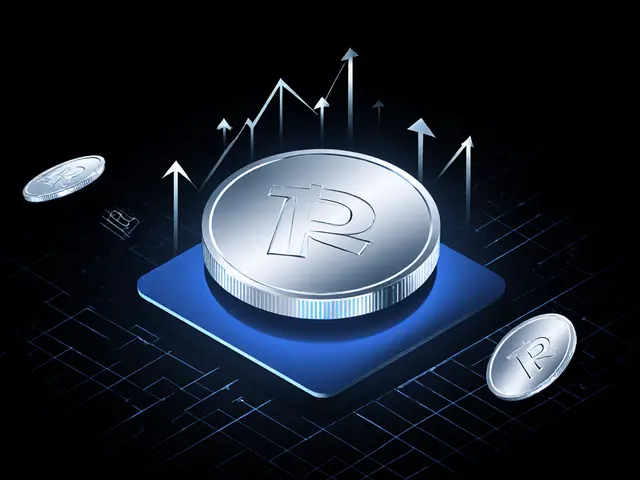
Angie Food
8 July, 2025 . 02:54 AM
Looks like another hype wave, but its just the peso crying again.
Jonathan Tsilimos
14 July, 2025 . 20:01 PM
The macroeconomic instability observed in the Argentine Republic catalyzes a capital flight toward decentralized ledger technologies predicated on fiat‑pegged assets thereby circumventing conventional foreign exchange controls.
jeffrey najar
21 July, 2025 . 13:08 PM
Honestly, if you’re trying to preserve savings, stablecoins are the most straightforward tool right now. They let you lock in a dollar value without worrying about the blue‑dollar premium, and you can move the funds instantly to a friend’s wallet. Most local exchanges now offer low‑fee USDT/USDC purchases directly with ARS, so the friction is minimal. Just make sure you keep your private keys safe and consider diversifying between a couple of stablecoins to spread risk.
Happy to answer any follow‑up questions you might have!
Rochelle Gamauf
28 July, 2025 . 06:14 AM
The analysis presented here glosses over the systemic risks inherent in relying on privately issued stablecoins. While the convenience factor is undeniable, the regulatory vacuum leaves users exposed to potential de‑pegging events and custodial failures. Moreover, presenting stablecoins as a panacea for inflation ignores the underlying fiscal deficits that drive the peso’s volatility. A more nuanced discussion would acknowledge both the short‑term benefits and the long‑term macro‑economic implications.
In short, enthusiasm must be tempered with sober risk assessment.
Jerry Cassandro
3 August, 2025 . 23:21 PM
One thing worth noting is that the transaction fees for USDT on the Ethereum network can spike during market congestion, making alternatives like Polygon or Arbitrum attractive for Argentines. Have you evaluated the gas cost differentials? It often makes sense to bridge assets to a layer‑2 before swapping, especially when dealing with modest monthly amounts.
Feel free to share the numbers you’re seeing; we can crunch them together.
Parker DeWitt
10 August, 2025 . 16:28 PM
Everyone’s busy shouting about “crypto‑free‑money” while forgetting that sovereign control is the real enemy here 🇦🇷💥 Stablecoins just let us sidestep the peso’s shackles, but the ultimate goal should be a home‑grown digital peso backed by real assets, not a foreign dollar replica. Until our government gets its act together, we’ll keep using whatever tool keeps our wallets alive. 🚀💪
Allie Smith
17 August, 2025 . 09:34 AM
i think it's kinda cool how folks are adapting, ya know? even with all the chaos the peso brings, people are finding ways to keep their money safe. stablecoins feel like a lifeline, especially when the blue market is wild. keep pushing forward, comunidad!
Lexie Ludens
24 August, 2025 . 02:41 AM
Oh, the tragedy! Every day the peso weeps, and we scramble for digital salvation-stablecoins become our last pleading hand, a beacon in the abyss of hyper‑inflation. Yet the shadows of uncertainty loom; will the next decree shatter this fragile haven? The drama unfolds like a tragic opera, and we are merely the chorus lamenting our lost purchasing power.
What a fate!
Aaron Casey
30 August, 2025 . 19:48 PM
From a financial‑technology perspective, the surge in stablecoin adoption is a textbook case of network effects accelerating under duress. The liquidity pools on decentralized exchanges provide depth that traditional forex markets lack in this environment. It’s critical for users to monitor on‑chain metrics like total value locked and peg stability to avoid unexpected slippage. Stay vigilant and leverage those analytics to safeguard your holdings.
Leah Whitney
6 September, 2025 . 12:54 PM
Great points raised above! I’m curious, have you tried integrating stablecoins into your everyday budgeting apps? Some Argentines use custom spreadsheets that pull real‑time price feeds, making it easier to track spending in both ARS and USD equivalents. If you haven’t, I can share a simple template that many have found useful.
Let’s keep the conversation rolling.
Lisa Stark
13 September, 2025 . 06:01 AM
Money, at its core, is a social contract-a shared belief in value. When that belief erodes, it is no surprise that alternative contracts emerge, be they digital or otherwise. Stablecoins, therefore, are not merely financial tools but expressions of collective resilience against institutional failure. They embody a pragmatic philosophy: preserve what you can, adapt what you must, and question what you accept.
Logan Cates
19 September, 2025 . 23:08 PM
Another thing: all this crypto hype could be a distraction engineered by big banks to keep the masses busy while they pull the strings behind the scenes. If you think the government isn’t in on it, think again-there are whispers about back‑door agreements for data mining. Stay woke.
Joel Poncz
26 September, 2025 . 16:14 PM
i totally get where you're coming from, the fees can be a pain but the freedom is worth it. just make sure you keep your seed phrase offline!
Shelley Arenson
3 October, 2025 . 09:21 AM
👍 Absolutely, a balanced view is essential. It’s easy to get swept up in hype, but keeping a level head helps everyone navigate the risks. 🌐
lalit g
10 October, 2025 . 02:28 AM
While the passion for a national solution is understandable, it’s also valuable to recognize that global interoperability can benefit local economies. Encouraging dialogue between policymakers and crypto communities may lead to a hybrid approach that safeguards sovereignty while embracing innovation.
Reid Priddy
16 October, 2025 . 19:34 PM
Sure, the data looks clean, but remember that on‑chain analytics can be gamed. A sudden surge in liquidity doesn’t guarantee long‑term stability; it could be a temporary pump orchestrated by market makers.
Shamalama Dee
23 October, 2025 . 12:41 PM
Thank you for sharing that philosophical lens. It reminds us that financial tools are ultimately extensions of human values. By approaching stablecoins with both practical and ethical considerations, we can foster a more resilient economic ecosystem.
scott bell
30 October, 2025 . 05:48 AM
Wow the plot thickens there the conspiracy angle adds a whole new layer of intrigue could it be that the push for crypto is secretly a tool for control or just a wild goose chase lets dig deeper
vincent gaytano
5 November, 2025 . 22:54 PM
Oh sure, because storing your seed phrase on a post‑it is the pinnacle of security. Nice job.
Dyeshanae Navarro
12 November, 2025 . 16:01 PM
Nice point, balance is key. Keep it simple, keep it safe.
Matt Potter
19 November, 2025 . 09:08 AM
We should rally behind a bold digital peso that competes worldwide! Let’s push our leaders to adopt a truly sovereign crypto.
Marli Ramos
26 November, 2025 . 02:14 AM
hahaha lol i cant even 😂 the market makers are sooo sneaky